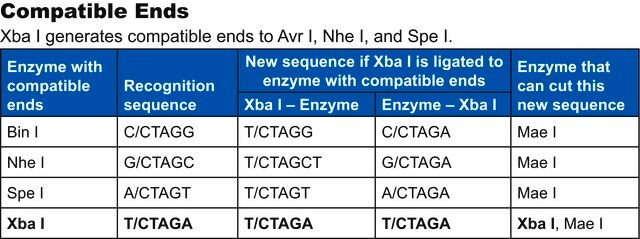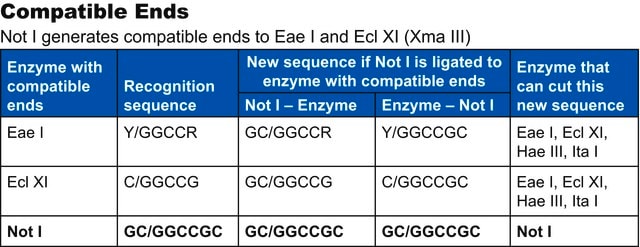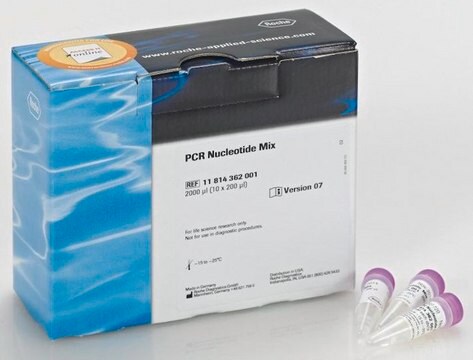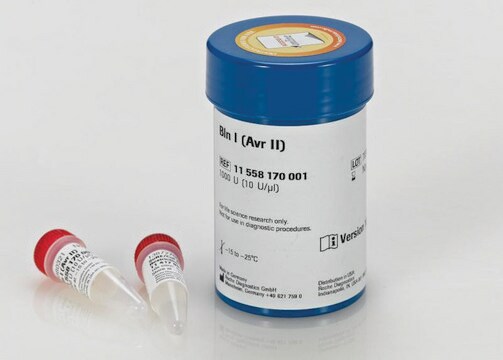11417991001
Roche
SuRE/Cut™ Buffer H
solution, pkg of 5 × 1 mL
Synonym(s):
SuRE/Cut Buffer for Restriction Enzymes, restriction enzyme buffer
About This Item
Recommended Products
Related Categories
1 of 4
This Item | B8781 | 11417959001 | B6048 |
|---|---|---|---|
| form solution | form buffered aqueous solution | form solution | form buffered aqueous solution |
| storage temp. −20°C | storage temp. −20°C | storage temp. −20°C | storage temp. −20°C |
| packaging pkg of 5 × 1 mL | packaging - | packaging pkg of 5 × 1 mL | packaging - |
| manufacturer/tradename Roche | manufacturer/tradename - | manufacturer/tradename Roche | manufacturer/tradename - |
General description
Application
Other Notes
Legal Information
Storage Class Code
12 - Non Combustible Liquids
WGK
WGK 1
Flash Point(F)
No data available
Flash Point(C)
No data available
Certificates of Analysis (COA)
Search for Certificates of Analysis (COA) by entering the products Lot/Batch Number. Lot and Batch Numbers can be found on a product’s label following the words ‘Lot’ or ‘Batch’.
Need A Sample COA?
This is a sample Certificate of Analysis (COA) and may not represent a recently manufactured lot of this specific product.
Already Own This Product?
Find documentation for the products that you have recently purchased in the Document Library.
Articles
The term “Restriction enzyme” originated from the studies of Enterobacteria phage λ (lambda phage) in the laboratories of Werner Arber and Matthew Meselson.
Related Content
Restriction endonucleases popularly referred to as restriction enzymes, are ubiquitously present in prokaryotes. The function of restriction endonucleases is mainly protection against foreign genetic material especially against bacteriophage DNA.
Our team of scientists has experience in all areas of research including Life Science, Material Science, Chemical Synthesis, Chromatography, Analytical and many others.
Contact Technical Service





